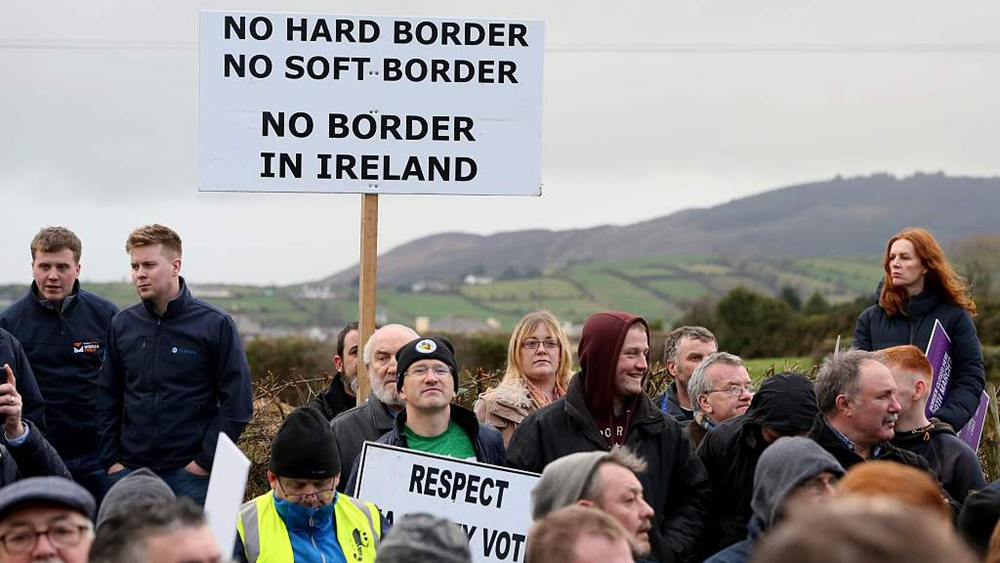
Europe
17:37, 21-Feb-2019
The backstop deadlock: Decoding the UK's alternate plans to avoid no-deal Brexit
Updated
18:01, 21-Feb-2019
By Nayan Seth, Li Jingyi
02:46

In November last year, the UK and EU reached an agreement on the Irish backstop.
The clause stated that an open border would remain between the UK's Northern Ireland and the Republic of Ireland till both sides agree to a final settlement.
At present, goods and services are traded between the two with few restrictions.
But in January, the UK parliament rejected the deal as there was no expiry date to the backstop, with opposing politicians arguing that it would lead to two different systems in one country.
In the last three weeks, the UK government has tried to find a middle ground to replace the backstop with alternate arrangements. Up until now there are two options which the May government is believed to be seriously considering.

A 'No Border, No Brexit' sticker is seen on a road sign in front of the Peace statue entitled 'Hands Across the Divide' in Londonderry, Northern Ireland, UK, January 22, 2019. /VCG Photo
A 'No Border, No Brexit' sticker is seen on a road sign in front of the Peace statue entitled 'Hands Across the Divide' in Londonderry, Northern Ireland, UK, January 22, 2019. /VCG Photo
First is the Malhouse Compromise. This plan is named after housing minister Kit Malthouse who encouraged talks between different groups of MPs.
The proposal includes extending the transition period for a year until the end of 2021. The plan would rely on technology to minimize border checks. Declaration and clearance procedures would take place in advance, away from the border. And surveillance would be intelligence-led. But critics say it would not solve the Irish border question as tariff checks would still be needed.
Next on the alternate list is Cox Codicil, which is drafted by UK attorney General Geoffrey Cox.
According to reports, the plan proposes a joint interpretative exit mechanism, with a notice period attached to it. In simpler words, this means it would put forward legally binding agreement that would allow the UK to quit the backstop unilaterally with one year's notice. But the EU has always ruled out any unilateral exit mechanism, insisting that any additional legal text cannot contradict the existing Brexit deal.
The UK is due to leave the EU at 23:00 GMT on 29th March. Though May has said she is determined to deliver Brexit on time, a number of her cabinet ministers have indicated they would be willing to agree to a short-term extension.
Many experts believe that the extension could be a temporary relief for all sides as it would only delay the exit process. Also, the extension would require ratification from 27 members of the European bloc.
The clock is ticking and a no-deal exit with a hard border looms, a possibility which analysts predict would be nothing short of a doomsday scenario.

SITEMAP
Copyright © 2018 CGTN. Beijing ICP prepared NO.16065310-3
Copyright © 2018 CGTN. Beijing ICP prepared NO.16065310-3